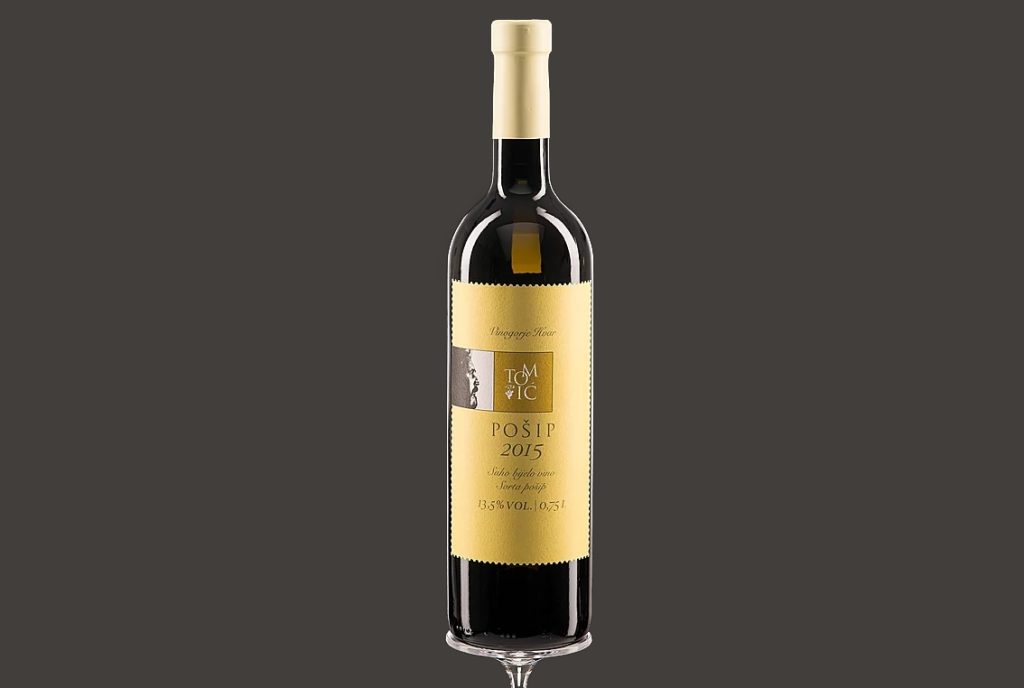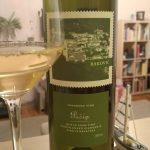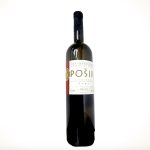It took me a while to recall some meals that would go perfectly with Pošip 2016 by Andro Tomić, and it was a pleasant wait with a glass in which the wine finely developed. Smelling it, tasting, pouring a bit to refresh it, as it is important not to leave too little in the glass as then it loses the scent and taste. And it is nice to compare it to a wine from the same variety and same winery, but from 2015. The older went down faster. It was love at first sight and simpler to enjoy. Octopus under the bell or grilled squid immediately popped up as ideas to go along with Pošip 2015, a wine whose “serious” problem is high drinkability. It goes down easy and a bottle empties fast. The young Pošip was more demanding, something not common with wines. In this case the difference is even greater as Tomić had changed the production process. The 2016 harvest was partially nurtured on yeasts in barrels from French and Slavonian oak. This is mandatory technology in the production of champagnes and better sparklings, often used with still wines from Chardonnay, and Luka Krajančić from Korčula and the Madirazza winery from Pelješac have already played around with Pošip in this way, with wines labelled “sur lie,” meaning on yeasts. The procedure give wines a special freshness, aromas of bread or brioche as well as fullness and complexity. Wines placed on yeasts have a generally longer life than those removed from residue to end fermentation This does not have to mean they are of higher quality, but have a different type of freshness which lasts longer in the bottle.
Right after serving, the Tomić Pošip 2016 had a scent of warm bread with a slow penetration of the soft aroma of green pear. As time passed, out came dried apricots and Mediterranean herbs, the recognisable scents of Pošip. The taste is full, relatively warm, as we are speaking of 13.5% alcohol, and lingers long. This gives an impression that not much can be consumed. This is not a wine to go down right away. It feels nice to swirl it in the mouth and demands some pondering, so a small amount is enough with lunch. This goes along with a saying which I am not sure if Andro Tomić concocted, but is famous by: “Wine is consumed by hours, not by litres.” And when consumed slowly, there is time to recall which dish to serve it with. Octopus yes, but as a salad. Grapes for this Pošip come from two Hvar locations, from Ager between Jelsa and Stari Grad, and from the southern slopes of the island.
The man from Hvar Island thus offered us a slightly different look at the variety from Korčula. Pošip is a natural cross between Bratkovina and Zlatarica Blatska. The latter is listed as critically endangered in Croatia. It exists almost exclusively on Korčula, and by official data, in 2013 it was being cultivated on only 0.56 hectares, roughly the size of a football pitch. This Zlatarica should not be mixed up with Zlatarica Vrgorska, grown in pure plantations in the wine growing subregion of Dalmatian Zagora. This Zlatarica is made into several wines on the market, and the best known is named Livia and made by the Opuzen winery Prović. The second mother of Pošip Bratkovina is also endangered, but not as much as Zlatarica Blatska. But it also probably doesn’t exist beyond Korčula, and boasts a more pronounced bitterness, so it is planted along with Pošip and Maraština, to secure freshness to wines Dr Marcel Jelaska from the Split based Adriatic Cultures Institute researched the origin of Pošip some 50 years ago and found a record in the archives of old Korčula families stating the first harvest of this variety was in 1880. At the presentation of Tomić wines in Zagreb at the end of last year, Dr Nikola Mirošević revealed that Pošip was being mentioned already in the 17th century.
For the original and more from Vino.hr blog on wine, click here.











